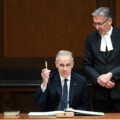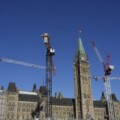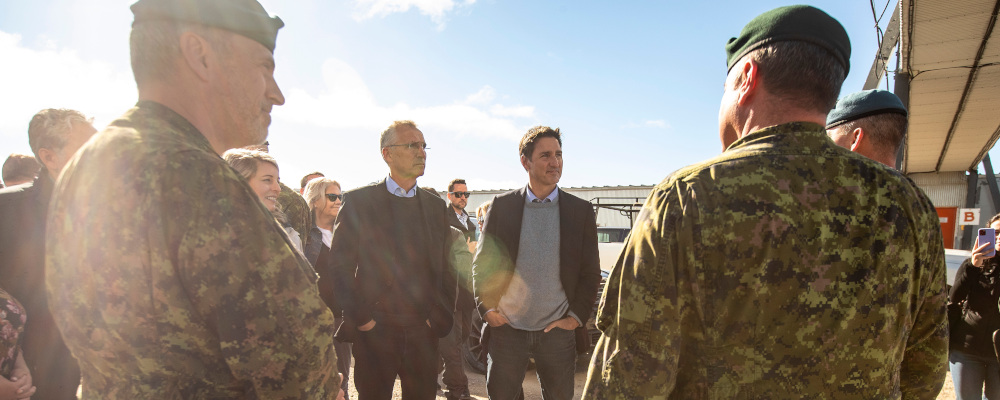The Washington Post recently reported that the latest leak of secret U.S. intelligence documents reveal that Prime Minister Justin Trudeau has privately told NATO officials that Canada can never meet its funding commitment to the military alliance.
This is anything but a surprise to seasoned defence observers. The Liberal government has never promised to meet the long-stated (but never-achieved) target of NATO funding—the equivalent of two percent of Canada’s GDP—and it has long been clear that our allies have become privately frustrated with Canada’s reluctance to pull its weight.
These candid intelligence notes pierce through Ottawa’s messaging about Canada being a good ally and global citizen. They make it clear the government’s pronouncements for domestic consumption are unconvincing to our allies and have harmed the country’s credibility in foreign circles.
But here’s the surprising bit: it is not clear whether the situation described in the leaked document accurately captures the current moment in Canadian defence policy. In fact, there have been credible signals that the government is at least considering, if not outright planning, a major increase in defence spending. Perhaps this policy shift is a response to reproaches from allies in closed-door meetings, or it could be a political calculation to deflect criticism on what is traditionally one of the Liberal Party’s weakest files. The government is currently drafting a defence policy update to the 2017 Strong, Secure, Engaged defence policy, which may offer a strategic rationale for launching such a shift.
Whatever the reason, the hints of this shift are just emerging. It is nowhere to be seen in any major announcement, nor was it accounted for in the last budget. Rather, its indications are scattered across a range of signals, including during outlook sessions hosted by the Canadian Association of Security and Defence Industries (CADSI). These annual gatherings of Canada’s largest defence industry association have the chiefs of the Navy, Air Force, and Army speak of their respective priorities. These interactions have recently been accompanied by requests for information from potential vendors, as well as establishing new project staff in DND or other federal departments.
A provisional shopping list includes a wide variety of much-needed replacements for Canada’s defence systems, including for the Victoria Class Submarine. At potentially $60 billion, the Canadian Patrol Submarine Project alone would do much to bridge Canada’s funding shortfall.
However, there are also some surprising and new capabilities being considered, including an advanced airborne early warning aircraft with a powerful radar capacity for surveillance over large swaths of airspace. Other potential systems of note are a long-range rocket artillery system, like HIMARS, and potentially a lightweight mobile artillery platform, like the BAE Systems Archer. The Army is also moving to acquire a new tank to replace the Leopard 2 currently in service.
This scale of modernization program would be a significant step toward restoring Canada’s military to a more capable footing after a decade of neglect. Many of the capabilities being considered are critical for the Canadian Armed Forces to operate in a future combat environment. For example, HIMARS, and highly mobile tube artillery systems like the Archer or NEXTER’s Caesar, have been immensely effective in the war in Ukraine. Some experts claim (perhaps hyperbolically) the former was critical in turning the momentum of the war against the Russian Federation in the spring of 2022.
Acquiring modern equipment can also help the Forces address personnel shortages; one recalls then-Chief of the Air Staff Angus Watt’s 2008 comment that “aircraft on the ramp” is a key retention tool. Still, considering the critical state of the CAF’s personnel base, the promise of new systems alone is unlikely to fix all of the issues. Furthermore, what potentially is being considered would require the military to significantly expand its standing forces, particularly in key trades, in order to operate these systems. For example, the Navy’s consideration of a two- to threefold expansion of its submarine fleet would require a concomitant increase in personnel, just as the RCAF will require new pilots, or the Army new gunners and other technicians for these new platforms. The list goes on, but it remains an open question as to who will crew these systems to ensure they operate effectively.
Ordering new systems is one thing; their delivery is quite another. Even if Ottawa made the decision to acquire today, some of these more complex capabilities—submarines or early-warning aircraft, for example—would not arrive for a decade or longer. Early this year, the government announced three urgent operational requirements for infantry and vehicle-based weapons to deal with aircraft, drones, and armoured vehicles. These items are crucial if Canadian units were to be deployed to Eastern Europe to confront aggression against NATO allies or to help replenish NATO allies. But the “expedited process” on two of these programs anticipates awarding a contract early in 2024, meaning it will be 18 months or longer before the “urgent requirement” is delivered. That’s a telling statement about the turgid pace of Canada’s procurement system.

Recent reports assess the DND’s material group (a key player in procurements) as being 30 percent under strength. This contributes to a broader issue, which is that the overall structure of defence procurement is not adept at delivering major systems within a reasonable timeframe. This is alarmingly problematic and requires urgent reform.
One approach the government seems interested in pursuing is acquiring systems “off the shelf”. While this would limit its choices to options already in service with other countries, there are other important factors to consider. Buying off the shelf will enhance interoperability with allies, to whom Ottawa is desperate to endear itself. It should also help expedite procurement, depending in part on if the government can be reasonable in its offset requirements. For some systems—HIMARS artillery, for example—there are no real domestic options, or even limited competition in the international market for that matter. Sole sourcing will likely be required for some programs.
Yet for early-warning aircraft, significant competition could emerge between Boeing’s E-7 Wedgetail and the Globaleye product of Bombardier and Saab. Besides the two systems having fairly differing performance characteristics, there are other political and strategic considerations at play. While the former would provide instant interoperability, the latter would support and sustain Canada’s own aerospace expertise. These are essentially apples-to-oranges comparisons that the government must now decide.
Finally, Ottawa must develop an unwavering approach to integrating new systems into an information dominance strategy. Very little in the military or the government’s discussions seem to grasp this fact, despite it being an urgency that guides most of our allies’ force development models. Building a process that incorporates these new capabilities into a larger information warfare approach must be a priority. As noted recently in DefenseNews, a U.S.-based news service for U.S. defence decision-makers:
“…the majority of what the [U.S.] military purchases is no longer weapons systems but rather services and technology. Zealous reformers continue to over-focus on weapons buys when hardware is increasingly the commodity.”
In the end, while it is encouraging that Ottawa appears willing to consider major increases in defence spending, it must reflect the reality of Canada’s challenges. The constraints of our defence bureaucracy and the diminished material and personnel state of the Armed Forces means that even if a move to two percent spending for NATO were to be made, it will be a decades-long process to see it realized and restore the CAF’s ability to operate.
On top of growing global instability, Canada’s credibility among our allies is declining. We must remedy our internal issues and arrest the country’s further slide toward irrelevance.
Recommended for You

The Notebook by Theo Argitis: Carney’s One Big Beautiful Tax Cut, and fresh budget lessons from the U.K.

Christopher Snook: Is Canada sleepwalking into dystopia?

Rudyard Griffiths and Sean Speer: The fiscal hangover from the One Big Beautiful Bill hits Canada

‘A fiscal headache for Mark Carney’: The Roundtable on how Trump’s One Big Beautiful Bill could affect Canada




